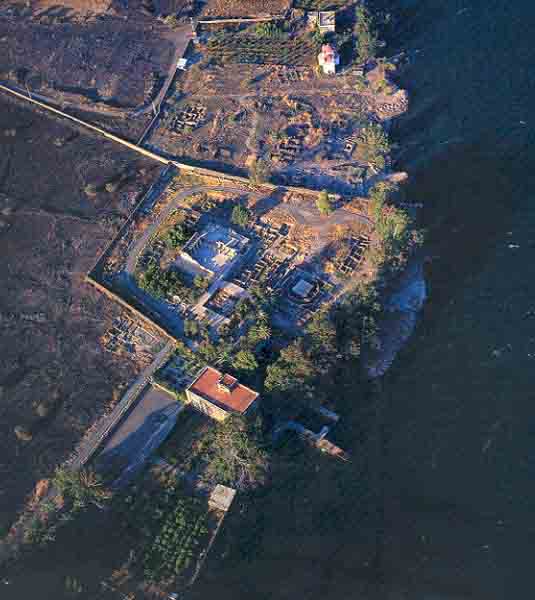Image Details

Richard Nowitz
Joint custody. The wall at center divides ancient Capernaum into areas owned by the Roman Catholic Franciscan order (bottom) and by the Greek Orthodox church (top). Located on the northwest shore of the Sea of Galilee, Capernaum, or Kfar Nahum (the Village of Nahum) in Hebrew, is frequently mentioned in the New Testament in association with the life of Jesus. Jesus moved from Nazareth to Capernaum (Matthew 4:13) and called his first disciples—Simon Peter, his brother Andrew, and James and John, the sons of Zebedee—to join him there (Matthew 4:18—22). Jesus apparently lodged in Peter’s house in Capernaum, preaching at the Capernaum synagogue and healing the Roman centurion’s slave (Luke 7:1–10; Matthew 8:5–13; John 4:46–53).
Though the Franciscan side of the property contains the best-known structures—a fourth-century A.D. synagogue (the pillared building at lower center) and a fifth-century octagonal church built atop a first-century house venerated as the home of Simon Peter—excavations conducted between 1978 and 1987 on the Greek Orthodox side have revealed important finds as well. In the accompanying article archaeologist John Laughlin describes a thriving early Roman and Byzantine commercial center in which Romans, Christians and Jews lived side by side for centuries.
